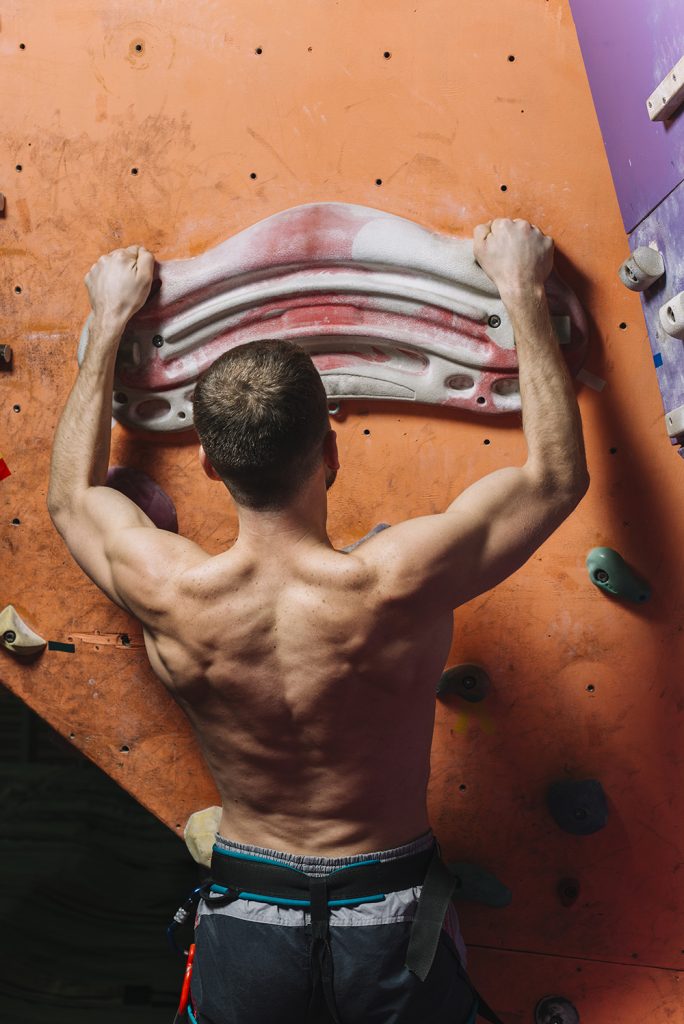Crimps may be the most polarizing climbing hold. If you’re good at them, you seek out all the crimp boulders and routes in the gym. If not, you stay as far away as possible, marveling at the finger strength of those crimp-loving crazies.
But, to be a well-rounded, advanced climber, being good at crimping is critical. You may get away with avoiding the crimp ladders (aka a straightforward climb using only crimps), but you’ll inevitably have to face them down on many climbs. And, if you love climbing outdoors, you’ll find you frequently need to use them.
Whether you’ve reluctantly or excitedly decided it’s time to improve your crimping abilities, it’s time to dive into the secret to mastering these climbing holds. Is it raw finger strength, technique, or repetition? We’ve answered all and more, so keep reading to find out which is the best methods to get better at crimping.
But before we get started, remember that climbing is an inherently dangerous sport. And crimping can lead to finger injuries, especially if a climber tries to progress too quickly. So proceed with caution!
What is a crimp?

First, let’s clarify what we mean when referring to a crimp. It’s a small climbing hold with a flat edge for your fingers. The depth of the edge can range from 1.5 finger pads to as small as 6mm. They require a substantial amount of finger strength to hold and generate power on.
How to Train to Get Better at Crimping
Multiple training mechanisms will increase your comfort and confidence in the crimp position. Many exercises aim to increase finger strength, while others focus on power, injury prevention, and technique.
Pre-hab your fingers
Remember, training to improve crimping is only beneficial if you’re injury-free. Take care of your fingers and tendons by warming them up before any intense hangboard, force gauge, or climbing workout. A good warm-up, tailored to your needs, usually includes easy hangs and finger flicks. Stretching and massage around each joint can also help prevent stiffness and soreness post-climb.
Hangboard
A classic training tool, hangboards are a fantastic yet simple way to strengthen the tendons and forearm muscles used to crimp. Most hangboards offer edges of various sizes, allowing you to increase the intensity of your training progressively.
One of the best hangboard workouts is repeaters. Find an edge that you can hold for 5-10 seconds. Hang for 5-10 seconds and rest the same length of time. Repeat 4-8 times with 2-3 minutes rest between each round. Over time, you’ll find you can perform the exercise on smaller edges.
Another great exercise is max hangs. Pick the smallest edge you can hold and hang for 3-8 seconds. Rest for two minutes and repeat five times. The goal is to pick a small enough edge that you are near failure at the end of the hang time.

Climb on crimps
As simple as this may seem, seeking out crimpy boulders and routes is an excellent way to get better at crimping. Look for routes with small, flat holds that require a lot of finger strength. You may struggle to send the climbs at first, but continuing to visit them will help develop the strength and technique needed to feel confident.
Try hard moves with crimps (don’t worry about sending)
If #2 Climb on Crimps is too daunting or you want to change it up, you can make up sequences or 2-4 max effort moves on crimpy holds. This may mean isolating a section of an existing climb or piecing the moves with the already set boulder problems. The goal is to hone your focus on giving 100% effort rather than sending an entire climb, teaching your tendons to adapt to strenuous efforts on small holds.
Use a force gauge
Force gauges mimic hang boards but allow for more control over the load. They also offer data you can use to track your progress. The most effective workouts to improve crimp strength using a force gauge are the same as those listed in #1 Hangboarding. Routinely using a force gauge will improve the maximum force you can generate when using a crimp.
Use good technique
One crucial component to improving crimping ability is mastering good technique. Understanding the three grip positions: open-hand, half-crimp, and full-crimp, is key to your climbing success.
Open-hand uses three fingers, usually the index, middle, and ring finger. Only the first pad of each finger is in contact with the hold, and the fingers bend at the second knuckle. Depending on the anatomy of a climber, the pinky finger may also engage.
The half-crimp adds the thumb, known as a thumb lock. The climber uses the same starting hand position as the open hand but wraps their thumb around their index finger. Using the thumb helps to lock your fingers onto the crimp and generate more force.
The full-crimp is almost identical to the half-crimp. In addition to using a thumb lock, the climber hyper-extends the distal interphalangeal (DIP) joint (also known as the knuckle closest to your fingertips). The hyperextension further increases the climber’s ability to generate force.
Aim to train in the open-hand or half-crimp position, as it will improve your strength and increase the force you can generate when you engage the full-crimp.
Improving your crimping skills is an achievable goal for climbers at every level. Whether you choose to incorporate hangboarding, a force gauge, or crimp-specific climbing sessions, there’s a training method that suits your availability and preference. Seize every opportunity to push beyond your comfort zone and climb on crimpy holds. Remember to warm up well, stretch afterward, and use good technique to prolong your climbing journey!

Recent Comments